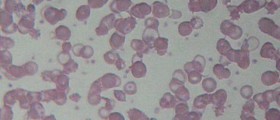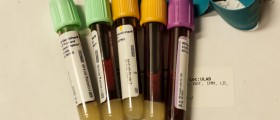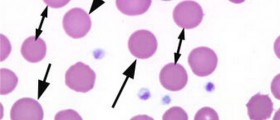
Anemia - Introduction
Anemia is a lack of erythrocytes (red blood cells) or hemoglobin caused either by excessive loss of these cells or due to their insufficient production. Scientists have discovered over 400 types of anemia. However, majority of them are really rare. This is the most common disorder of the blood.
Symptoms of Anemia
The symptoms of anemia become clear enough once the body and body cells start to suffer from insufficient supply with oxygen. Even different types of anemia feature with unique symptoms and signs.
People who are anemic are pale, they complain about dizziness, chronic fatigue, weakness, headaches and irritability. The body temperature may be low and the hands and feet cold. In severe form of anemia patients suffer from rapid heartbeat, they may experience chest pain and shortness of breath.
Different Types of Anemia
Even though there are more than 400 types of anemia not all of them occur frequently. Each type has different cause and the symptoms may be practically the same.
Iron deficiency anemia occurs either due to loss of blood or to improper absorption of iron. Even small but permanent loss of blood may eventually cause iron deficiency anemia. Furthermore, people may develop this type of anemia if they do not consume food rich in iron, or even if they eat food rich in iron but it cannot be properly absorbed by gastrointestinal tract.
Sickle cell anemia is hereditary form of anemia. In sickle cell anemia erythrocytes are sickle-shaped and they break down faster than normal red blood cells. The production cannot follow breakdown of the red blood cells and patients develop symptoms of the disease.
Pernicious anemia develops due to vitamin B12 deficiency. Vitamin B12 is one of the most important substances for proper production of red blood cells. Deficiency of vitamin B12 occurs either due to its deficiency in food or if it is not properly absorbed from gastrointestinal tract.
One more type of anemia is folic acid deficiency anemia. It develops as a consequence of insufficient intake or absorption of folic acid.
Thalassemia is a type of anemia caused by genetic mutations. It belongs to a group of hemolytic anemia and the symptoms of thalassemia are connected to damaged or mutated genes responsible for proper hemoglobin production.
Aplastic anemia is one of the most serious types of anemia. It may occur due to many causes including radiation therapy, chemotherapy, exposure to toxic chemicals, prolonged usage of certain medications and bone marrow infections.
Treatment for Anemia
The treatment for anemia basically depends on the underlying cause. If anemia is caused by certain deficiency the treatment includes intake of the deficient substance. There is no cure for genetically induced anemia such as sickle cell anemia and thalassemia. In this case patients cannot be completely cured but the symptoms may be partially alleviated. In severe forms of anemia patients require blood transfusions. Aplastic anemia requires specific approach and numerous medications.

















Your thoughts on this
Loading...